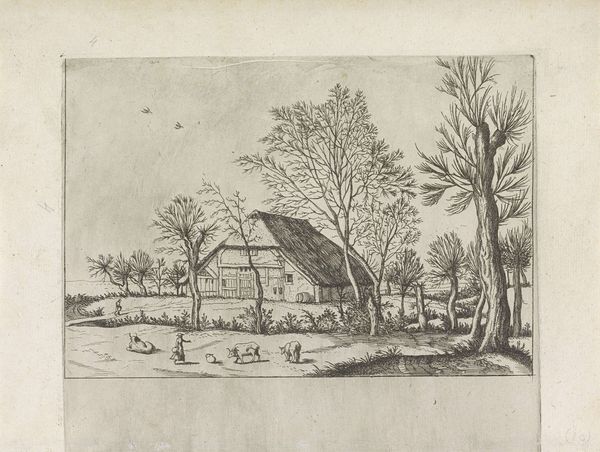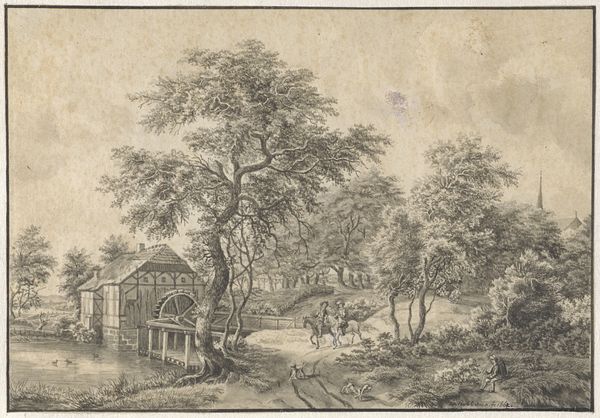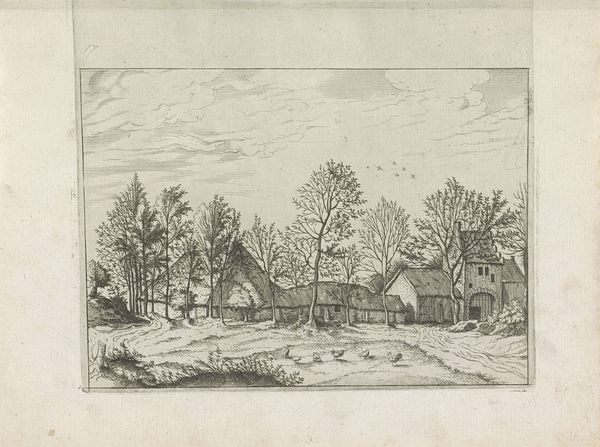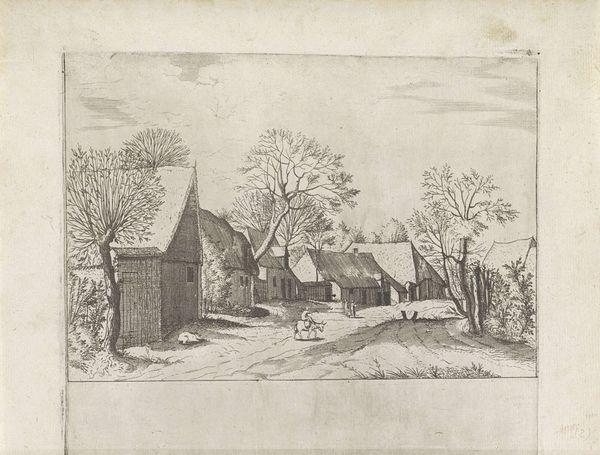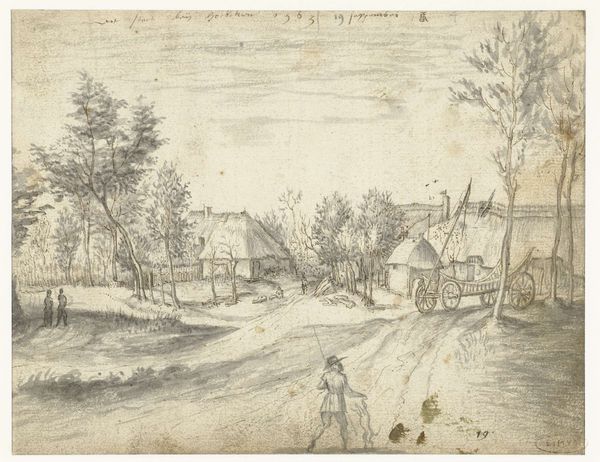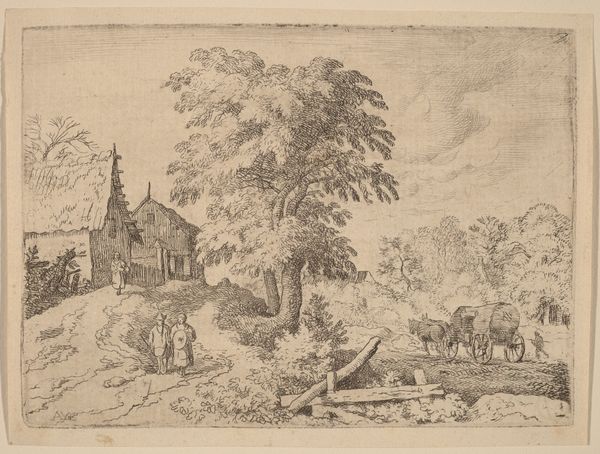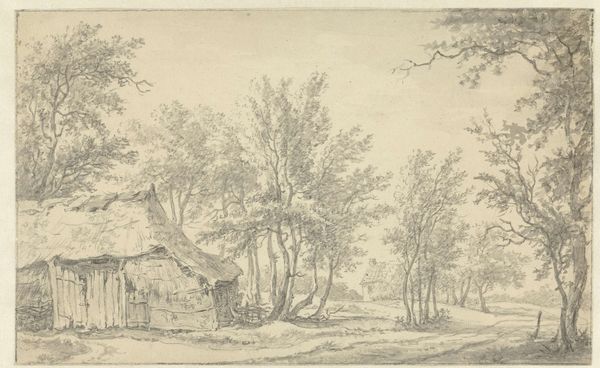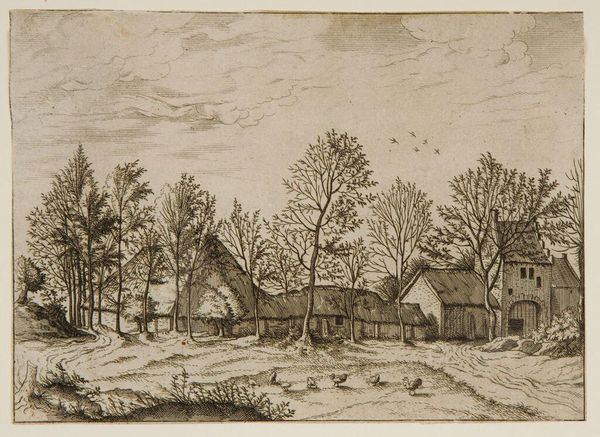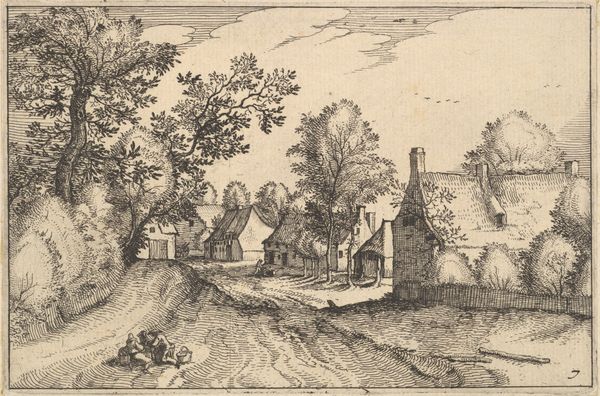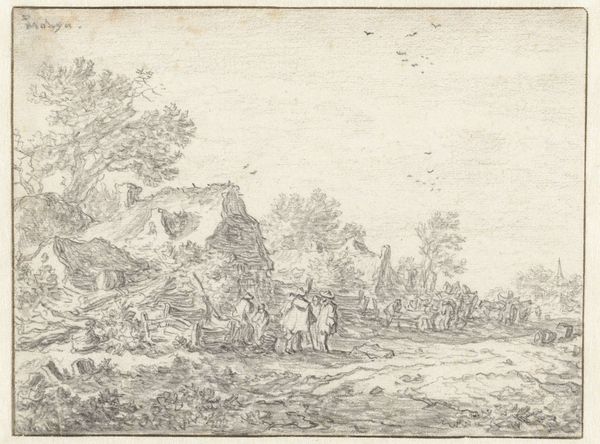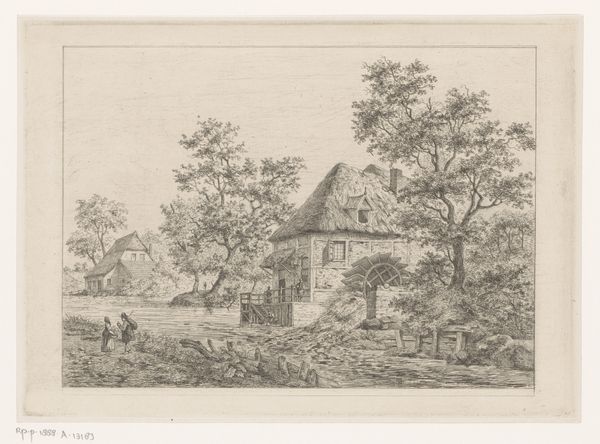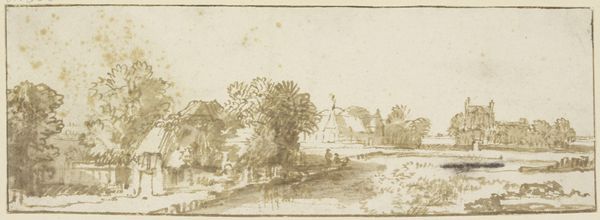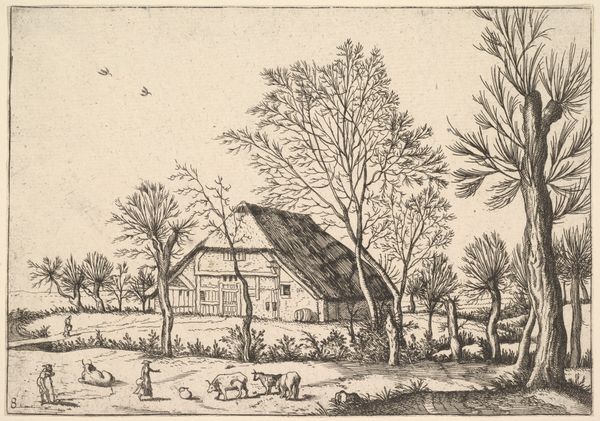
drawing, ink
#
drawing
#
baroque
#
landscape
#
etching
#
ink
Copyright: Public Domain
Curator: The stark simplicity of this image is quite striking, don't you think? Editor: It does have a raw, almost melancholic feel to it, a bit stark as you say. The lines seem hesitant, the landscape bare. Curator: That simplicity is part of the drawing's beauty. We're looking at "Flache Landschaft mit Wassermühle," attributed to Paul Bril. It is currently housed here in the Städel Museum. It's a study done in ink. Editor: Ink on paper – the foundational elements. What interests me immediately is how such humble materials can evoke such a detailed image of working landscape, even convey a sense of its social purpose. Who would have been working here and under what conditions? What sort of public would be enjoying this scenery? Curator: The social aspect is interesting, absolutely. Remember, landscapes during this period weren't just about pretty scenery. They reflected the human relationship with nature, the agricultural economy. A mill of course is about processing grains, ensuring the sustenance of local people... a focal point for communities and social infrastructure of the region. The building almost dwarfs the people. Editor: Right, the relationship of the mill to the small figures reminds me of a Breughel painting with a vast land put in service for production purposes. And there is a strong feeling about land enclosure. Was that an aristocratic property, perhaps? I would need some historical investigation to fully grasp the painting's imagery. The ink as medium also is interesting: this work exists as an ink work and could be an etching as well. Curator: Etchings allowed for wider dissemination of images to middle classes as print form grew popular, so such rustic scene became domestic for bourgeois. But it would take an extensive social-economic review to identify patronage or influence... But let us agree that Bril invites you into a conversation that makes this little piece incredibly captivating. Editor: Indeed, and it is really in this intimate dialogue that these images reflect and influence perceptions about how we treat working land.
Comments
No comments
Be the first to comment and join the conversation on the ultimate creative platform.
